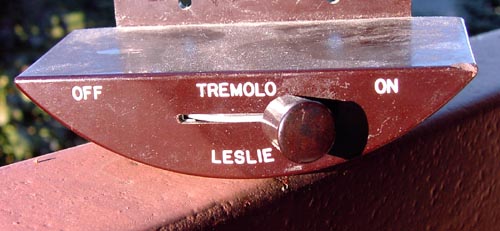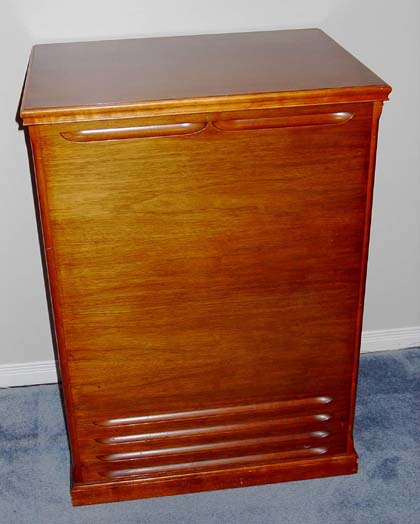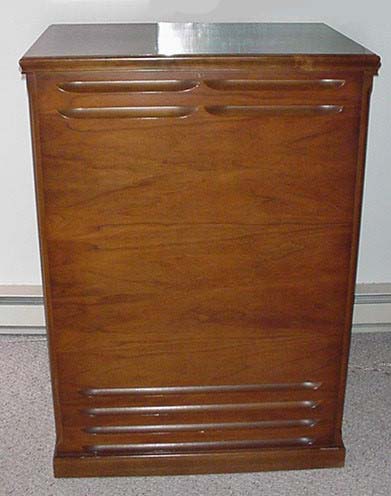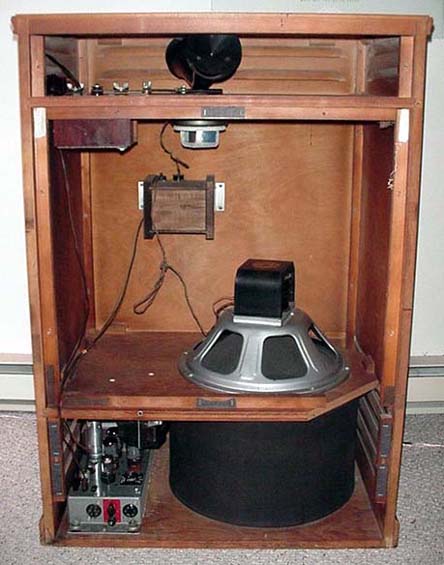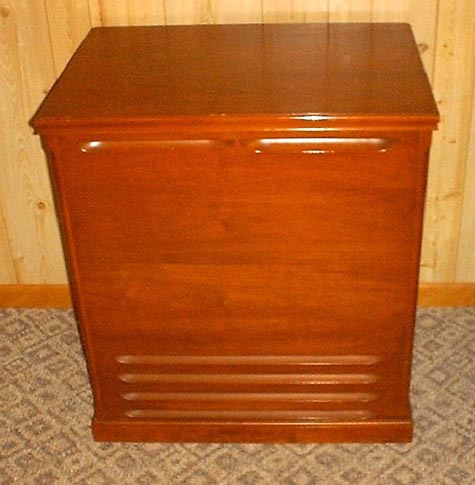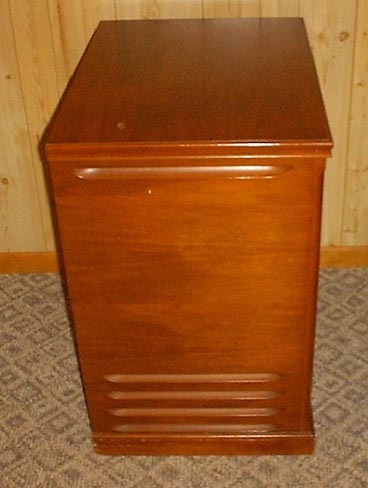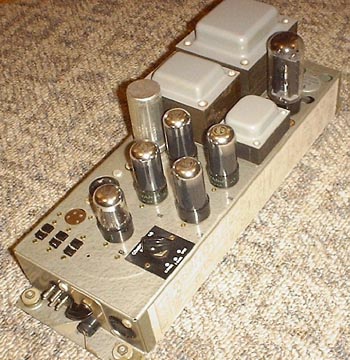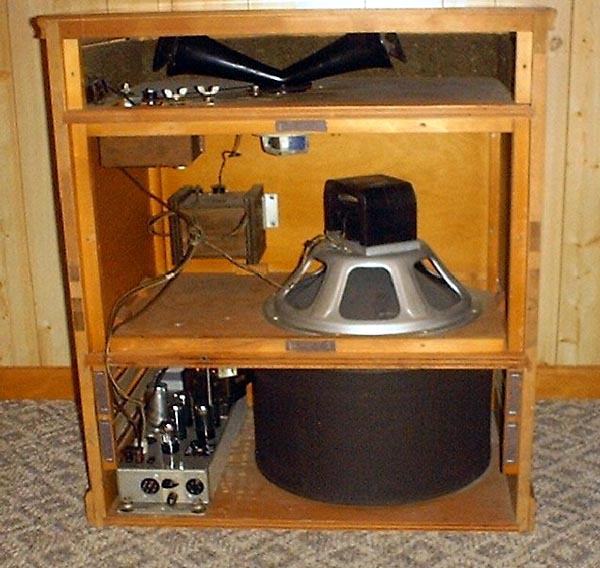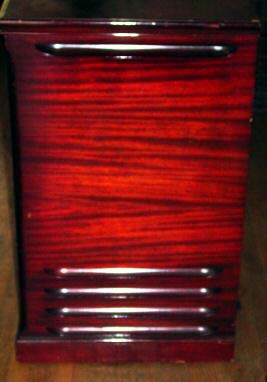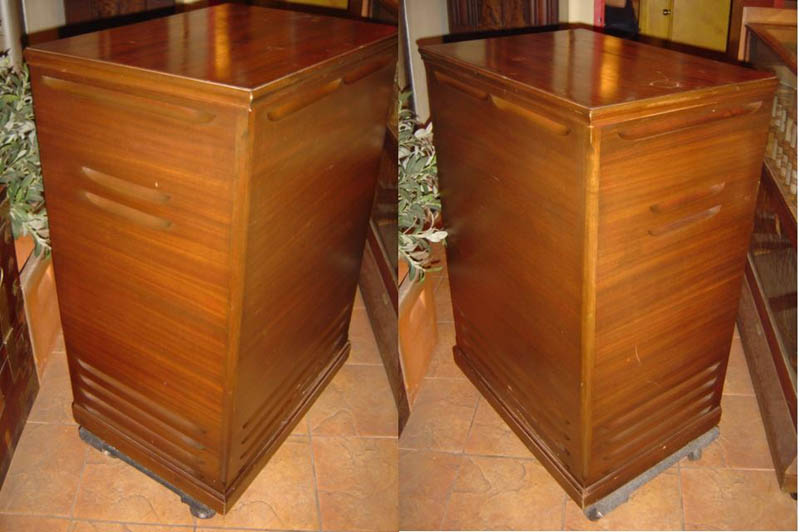|
The single speed Leslies |
|
|
Wut? I thought all Leslies could spin at either slow or fast speed? Well - I thought so myself until I discovered the wonderful world of fellow Hammond/Leslie enthusiasts on the 'net back in 1996. Until then I'd only listened to models 147, 145 and 760. After reading and learning more I found out that all Leslie speakers made before 1963 only had fast speed and off. Amazing, I thought - who'd want to listen to that? I've gotten wiser I must say. When I started listening to organ jazz shortly after getting on the Internet it dawned on me that the 'dry' sound I heard was coming from a stopped Leslie with either no vibrato or Hammond chorus vibrato. |
|
|
|
|
|
1st generation models - tall boys indeed
|
|
|
The first series of speakers, as stated in the Tall Boy Section, was introduced in 1939. The model 30A was the first and was followed by models 31A and later 31H (31W), 31H Type 2 and 31H Series III where the latter three all had similar specs but with different amp designs. The 30-series Leslies were in production from 1939 until around 1960 (the last couple of years on special orders only). They were all 60" tall with electro-magnetic bass speakers (the very first model 30A also had electro-magnetic treble speakers).
|
|
|
Before the Leslies went 2-speed, the
'half-moon' switch furnished with Leslie kits had tremolo 'on' and 'off'
instead of 'chorale' and 'tremolo'. |
|
|
Smaller cabinets The 'H' in 31H indicates the compatibility with the Hammond organs. For a while there was also a model called 31W made for 'Wurlitzer' organs. This way of having different amplifiers for the same cabinet is still being used - you can still buy either a Leslie 122A (for Hammond organs with balanced line outputs) or a Leslie 147A (for 'universal' non-balanced output). The Hammond-type Leslie got a little sister in the early 50's called model 21H - this one was 41" tall and the cabinet size must have been the right one because it is the one still being made today. Model 21H was available with either a 20W amplifier or the bigger 30W model found in the 31H.
|
|
|
Leslie 21H
21H pictures are kindly donated by Regan Bull in Canada.
|
 The 21H stripped of parts. |
|
The 20W Leslie 21H Series III amplifier. The output tubes are 6V6's. The four-section capacitor has been removed, and new separate capacitors placed under the chassis in this specimen. Note the 5U4 rectifier tube behind the power transformer. The larger 32H 30W amplifier is similar, but sports 6L6 tubes instead of 6V6 and two 5U4 rectifiers instead of one. |
|
|
|
Different inputs Concurrently with the Hammond type Leslies, there were two models made with the 'Wurlitzer' non-balanced inputs: Models 46W and 44W, the latter in a 33" cabinet. The 46W had the same amp as model 31W - i.e. 30W with a quartet of 6L6 tubes, the smaller 44W had a 20W amp with a quartet of 6V6's in it- in many ways a similar design to the 20W amp found in the 21H speaker. The Hammond -type input and the 33" cabinet would not be offered as an official model until the late 60's, where model 142 saw the light of day. One could, however, make such an animal by putting a model 21H amplifier in a 44W cabinet - or a 22H amp in a 45 cabinet, since amplifier footprints and speaker configurations are similar throughout each series/generation of cabinets.
|
 The 46W from the back, complete with the red Leslie tag and the instructions sheet glued to the middle back cover. |
|
|
A closer look at the upper back of the 46W cabinet. Note the 'shelf' dividing the top and middle compartments is made of plywood, as is the rest of the cabinet. The all plywood design, as opposed to later particle board cabinets, is a big part of the sound of these older Leslie cabinets. |
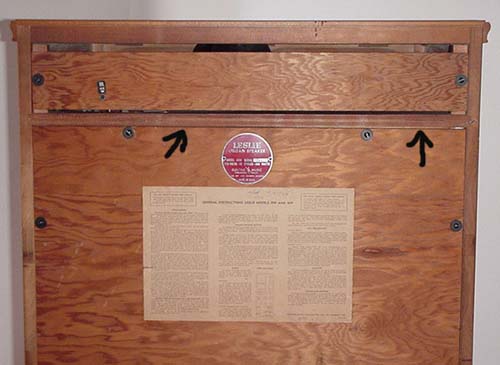 |

Close-up of the amplifier. Major components are noted on the picture. 1. Output socket for extra speaker
|
|
|
Leslie 44W
|
|
| The smaller Leslie 44W. This and the following pictures are courtesy of Mike Pilato of NY State, USA. |
|
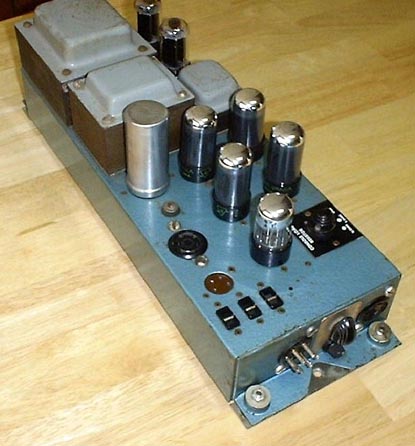 The 44W amplifier, with 6V6 tubes and 5Y3 rectifiers - to my knowledge, the 5Y3 rectifiers were used instead of one single 5U4 in later versions of the 44W and 21H amps. |
|
|
The 44W from the back - with all the back covers in place |
|
|
|
The 44W amp of a different vintage - the chassis is silver instead of blue, and the rectifier is a single 5U4(G). |
|
|
|
|
|
Here is a nice Leslie 44W in a more red finish. Pictures used with kind permission. |
|
Two channels The model 50C (where the 'C' was 'Conn') was special because it was
the first Leslie to have two channels: a rotary channel for the flute
voices of the Conn organ, and a stationary 'dry' channel for the
string/reed voices. The 50C was more or less a Leslie 46W with an added
amplifier channel of approximately 15W output through two 6x9"
speakers. |
|
|
Leslie 50C. Pictures used with kind permission.
|
|
|
The amplifier design was quite interesting because it utilised the then modern 6550 tube in the output section. The 6550 tube became the standard output tube in all later 40W Leslie amplifiers including the ones still in production. The 50C amplifier did not, however, have the OC3 regulator tube found in the later models and the bass speaker was still a field coil type Jensen F15LL.
|
|
|
|
|
